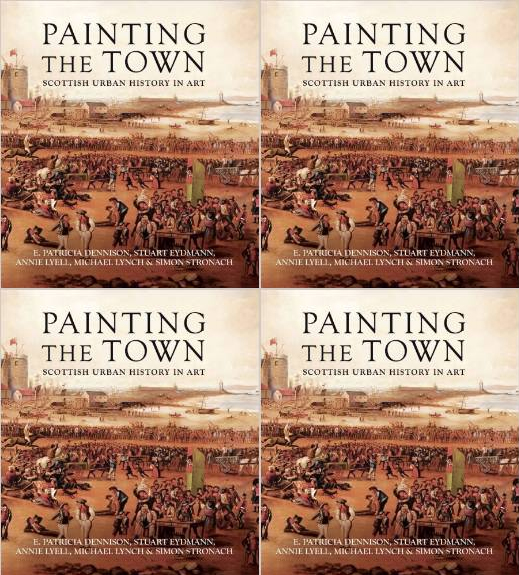Painting the Town. Scottish Urban History in Art
Review

Painting the Town. Scottish Urban History in Art, E. Patricia Dennison, Stuart Eydmann, Annie Lyell, Michael Lynch and Simon Stronach, Society of Antiquaries of Scotland, Edinburgh, 2013, hardback, ISBN 978 1 90833 204 2
This beautifully illustrated volume amply lives up to its publisher's claim on its dust jacket of displaying ‘a stunning visual record of contemporary images of Scotland's towns and townspeople' before the popular adoption of photography in the third quarter of the nineteenth century. Encompassing over 200 paintings, engravings, sketches and maps of some eighty towns, many published in this volume for the first time and selected primarily for what they reveal about Scottish urban development, it does indeed ‘offer a unique insight into the changing lifestyle and townscapes of Scotland'. Paintings of well-known artists such as Charles Cordiner, Alexander Nasmyth and Alexander Carse rub shoulders with less familiar works, featuring local artists as well as visitors from England, Ireland, Germany, Italy and the Netherlands ‘chosen for what they reveal rather than who composed them'. The Georgian caricaturist William Heath's portrayal of a well-regulated Glasgow Fair extending from the Saltmarket to Glasgow Green in 1825 contrasts vividly with amateur artist William Thomas Reed's depiction of ‘the drunken squalor' of Leith Races in 1859, but both provide insights into the conduct of the crowds that periodically gathered in urban locations throughout this period against contrasting townscapes. The former reveals the elegant terraced houses surrounding St Andrew's Parish Church, with a hint of industrial development around Calton, the latter portrays a heavier and more pronounced industrialised backdrop and polluted urban environment to the more densely populated crowds escaping for an afternoon's debauchery on Leith Sands.
The accompanying expert textual commentary from a team of leading authorities including an archaeologist, a building conservator, a local and two urban historians reveals insights into urban history which will be applicable in other historical contexts. A lucid introduction offers a succinct overview of Scottish urban history from the medieval era to the nineteenth century, analysing significant turning points. It suggests, for example, that ‘the wholesale defeat of the last Jacobite rising of 1745-6 brought a regime which was determined to master the topography and logistics of an alien landscape', inaugurating ‘a systematic campaign of cartography, charting the terrain, roads and strongholds over much of Scotland' which effectively constituted ‘a mission to lay the foundation of a British state'. The volume also contains a fascinating and very useful glossary explaining that ‘tollbooth', for example, described as ‘the most important secular building' in the town served as the meeting place of the burgh council; a collection post for market tolls; and also often housed the town gaol. It also reveals at least two separately listed terms for a narrow lane or alley, namely ‘vennel' and ‘wynd' and that a ‘hingin lum' refers to a primitive chimney head constructed from timber as opposed to masonry and a ‘penny geggie' was a ‘fairground entertainment with paid entry'.

